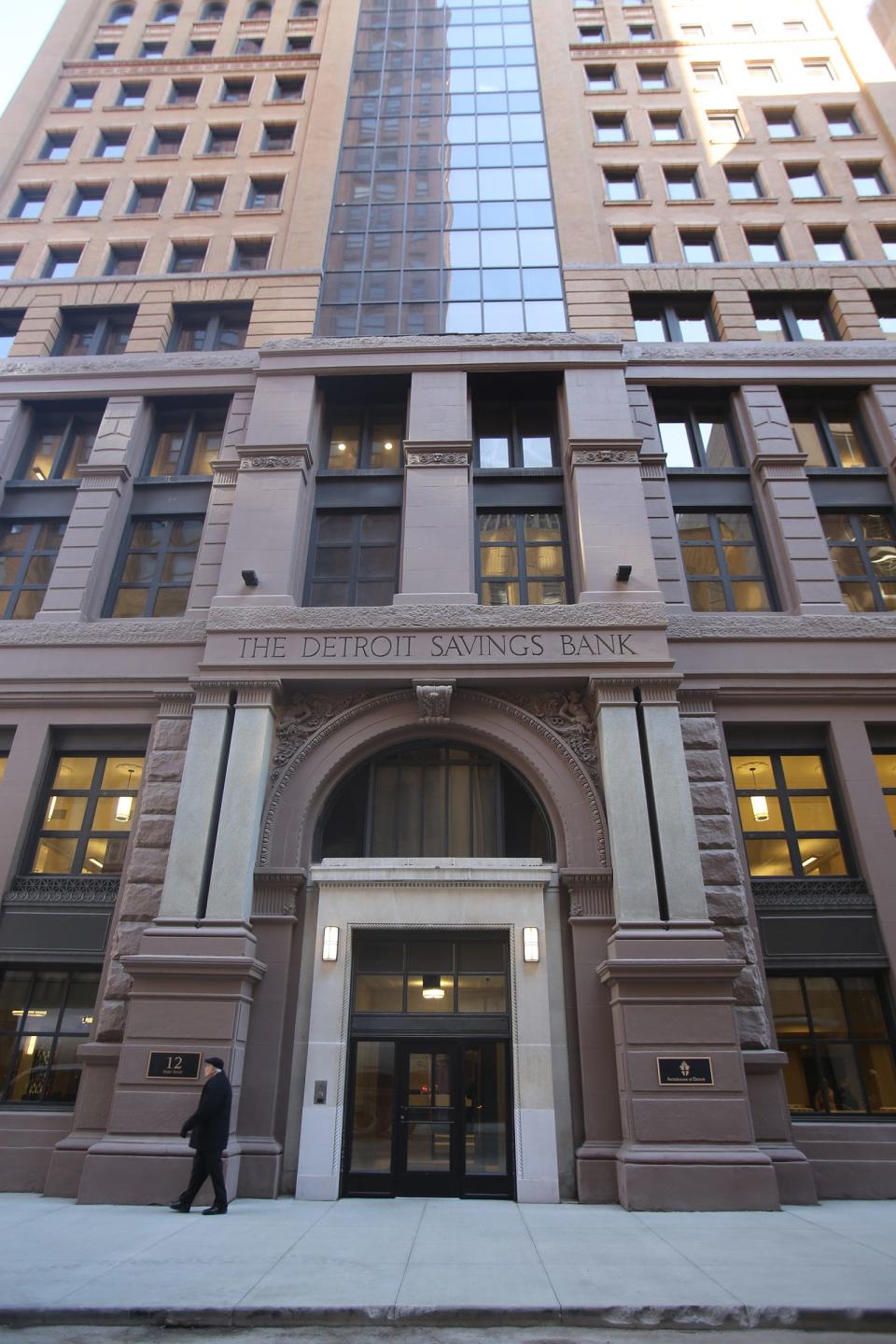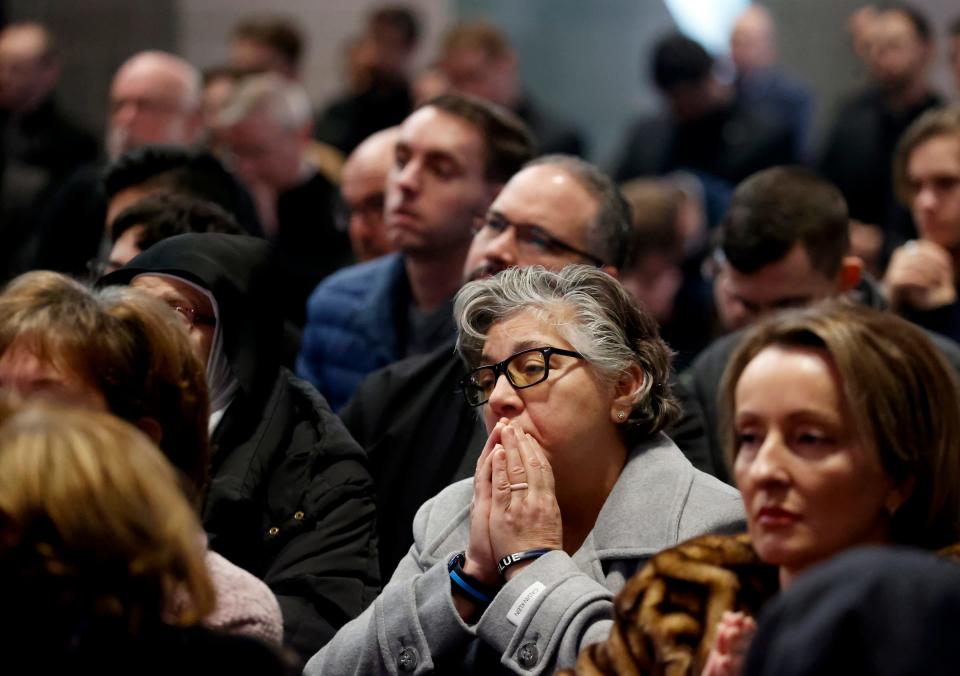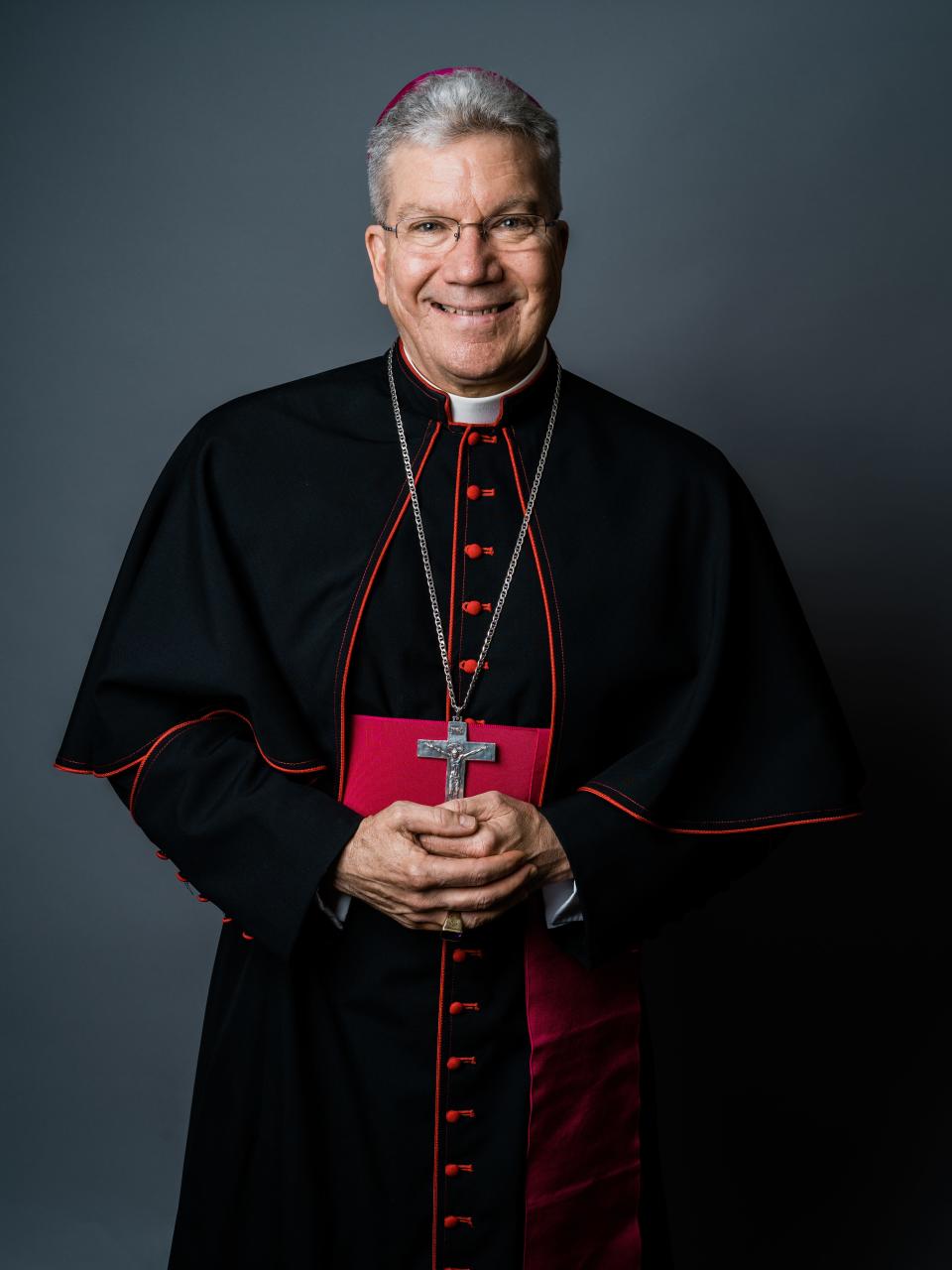Catholic population in southeastern Michigan dips below 1 million
The Catholic population of the Archdiocese of Detroit has dipped below 1 million for the first time in about 70 years.
There are now 907,000 Catholics in six counties in southeastern Michigan: Wayne, Oakland, Macomb, Lapeer, Monroe, St. Clair, according to information in a news release Thursday from the Archdiocese of Detroit. The release was about the appointment of a new auxiliary bishop, Jeffrey Monforton. At the end of the release, it said there are "approximately 907,000 Catholics who reside in" the archdiocese.
That's a roughly 40% drop from about 20 years ago. The Free Press reported earlier there were 1.5 million Catholics in the archdiocese in 2005 and 1.4 million in 2009. By 2020, that had decreased to 1.3 million Catholics and last year, the archdiocese said there were 1.1 million Catholics.

"The new number represents a more accurate count, not any big drop over the last year," archdiocesan spokesperson Holly Fournier told the Free Press.
The archdiocese adjusted its estimate based on recommendations from the Center for Applied Research in the Apostolate at Georgetown University, which studies the Catholic Church, and also research observations, Fournier said. The numbers are for baptized Catholics and includes those who are undocumented immigrants.
"Since we calculate based on total population of the region, we want to make sure we also account for baptized Catholics who are undocumented immigrants and thus not included in overall population figures," Fournier said.
The number of Catholics in southeastern Michigan has not been this low since the late 1940s.
In 1946, there were 800,638 Catholics in the Archdiocese of Detroit, the Free Press reported. In June 1950, there were 950,000 Catholics. The Detroit archdiocese crossed the 1 million mark sometime in the early 1950s.

There were 1.05 million Catholics in May 1954, the Free Press reported at the time. That rose to 1.2 million in 1958, 1.43 million in 1963 and 1.5 million in 1969 and 1971. In 1971, two counties in the Archdiocese of Detroit with smaller Catholic populations — Lenawee and Washtenaw — broke off and became part of the diocese of Lansing. The overall population of metro Detroit is roughly the same size as it was 50 years ago, so the diminished numbers of Catholics indicate many have left the church. The percentage of metro Detroiters who identity as Catholic has markedly decreased, but the Catholic Church remains the largest denomination in the region.
The news about a decline in the Catholic population comes as a historic Catholic house of worship, the former St. Patrick Church on Parsons in Detroit, was razed over the past week. It sits next to the Detroit Symphony Orchestra's Max M. & Marjorie S. Fisher Music Center on Woodward Avenue.
Fournier said the archdiocese is under contract with a buyer for the building.
"As a condition of the pending sale, we are in the process of demolishing the building," she said in a statement. "We will be able to confirm the buyer when the sale is closed, which is expected to occur within the next week or so, at which point the buyer can share their plans for the site going forward."
Built in 1926, the church was originally called the Chapel of St. Theresa the Little Flower, holding its last Mass in 2015. The building was deconsecrated in 2022, "meaning it is no longer considered a sacred worship space," Fournier said. "This is a required step before demolition can occur at any former Catholic church building. As part of that process, sacred items were removed and distributed to other churches. While it is never easy to say goodbye to a church building, St. Patrick has been vacant and unused for many years."

Meanwhile, Detroit native Monforton will be became an assistant bishop in Detroit in November. He currently leads the Diocese of Steubenville in Ohio, where he has served for about a decade.
He was born in Detroit in 1963 and became ordained as a priest in 1994. He served in several parishes in metro Detroit and served as priest-secretary to Cardinal Adam Maida, the previous leader of the Detroit archdiocese.
The Archbishop of Detroit, Allen Vigneron, is to submit a resignation letter to the Vatican when he turns 75 later this month, as required by church law. He will step down as archbishop after Pope Francis accepts his resignation, Fournier said.
Here's a list of the number of Catholics in the Archdiocese of Detroit as reported in the Free Press over the years based on archdiocesan estimates.
1937: 550,000 Catholics in the Archdiocese of Detroit in the year it was formed.
1946: 800,638
1950: 950,000
1954: 1.05 million
1958: 1.2 million
1963: 1.43 million
1969: 1.5 million
1971: 1.5 million
1979: 1.2 million
1983: 1.5 million
1990: 1.5 million
1998: 1.3 million
2005: 1.5 million
2009: 1.4 million
2020: 1.3 million
2022: 1.1 million
2023: 907,000
Contact Niraj Warikoo: nwarikoo@freepress.com, Facebook.com/nwarikoo, X @nwarikoo
This article originally appeared on Detroit Free Press: Catholic population in southeastern Michigan drops below 1 million

